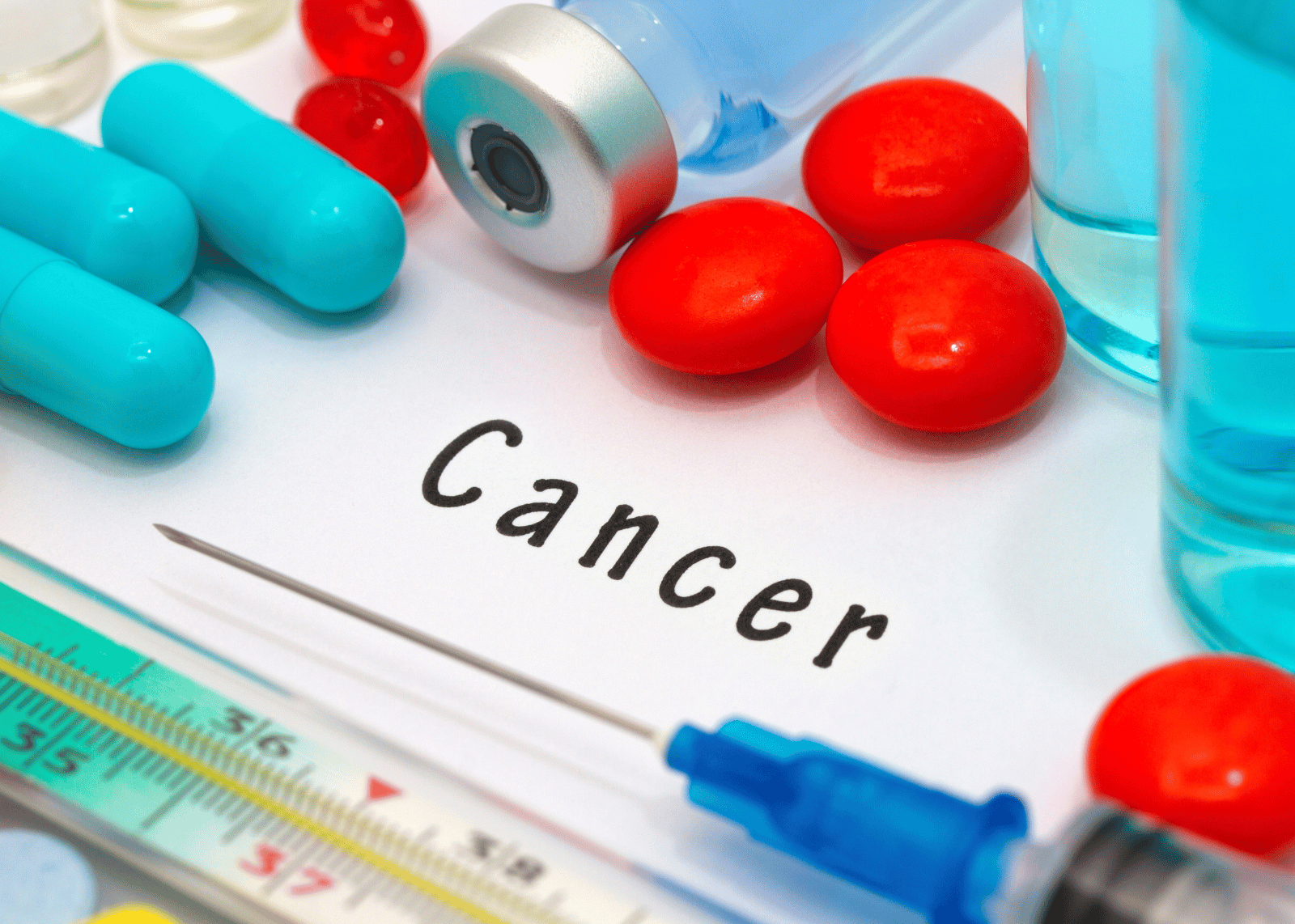Beyond the Diagnosis
Beyond the Diagnosis Cancer stands as one of the most formidable challenges to human health in the modern era it’s not a single disease but a complex constellation of aliments characterized by uncontrol growth and the spread of abnormal cells within the body. At its core cancer represents a breakdown in the intricate mechanism that regulates cell growth division and death processes essential for maintaining the delicate balance of the human body. Cancer forms after the tumor. There are mainly two types of tumor benign tumor which is non cancerous and typically grows slowly. They do not invade nearby tissue or spread to other parts of the body and can be treated by early diagnosis. Malignant tumors also known as cancer tumors are aggressive and can invade nearby tissue and organs. They can spread to other parts of the body through the bloodstream and are particularly dangerous which causes cancer.
Cancer affects almost any part of the body leading to various types of diseases. there are some common types of cancer.
Breast cancer this forms in the breast tissue typically in the duct. It affects both men and women although it is much more common in women.
Lung cancer it develops in the lungs usually in the cell lining of the air passages. It is strongly associated with smoking but can also occur in non smokers due to factors like exposure to radiation or secondhand smoke.
Prostate cancer this affects the prostate gland in men. It usually grows slowly and may not cause significant symptoms in its early stage.
Skin cancer it occurs when abnormal cells grow uncontrollably in the skin.
Leukaemia it is a cancer of the blood and bone marrow characterized by the overproduction of abnormal white blood cells.
These are just a few examples of many types of cancer that can affect individuals. Each type of cancer has its own risk, symptoms, diagnostic method, and treatment options. Early detection is crucial for improving outcomes and survival rates.
World of Cancer
Cancer is a complex disease influenced by a combination of factors including genetic, environmental, and lifestyle. Here are some common causes and risk factors such as genetic factors which we inherit from our parents. Certain genetic mutations can increase the risk of developing cancer. This mutation may predispose to a specific type of cancer.
Environmental exposure such as exposure to carcinogens promotes the development of cancer. environmental exposure can increase cancer risk. Carcinogens include tobacco smoke UV radiation from the sun or tanning bed, air pollutants certain chemicals, and radiation from medical imaging tests or occupational exposure. Lifestyle choices or certain habits and behaviors can contribute to cancer development. These include smoking, excessive alcohol consumption, Or poor diet. even a lack of physical activity and being overheated can cause cancer. Cancer risk 10 increases with age as cells accumulate genetic mutation over time. many types of cancer are most common in older adults. Another factor even includes chronic inflammation, hormonal factors, or a family history of cancer. These causes and risk factors are crucial for cancer prevention efforts and early detection through screening.

Symptoms
of cancer can vary widely depending upon the type location and stage of the disease however some general symptoms that may indicate the presence of cancer include unexplained weight loss without changes in diet or exercise habits. Unexplained fatigue that does not improve with rest can be a symptom of cancer. even chronic pain in a specific area of the body which may change over time can be a symptom of certain types of cancer such as bone cancer or pancreatic cancer. Unexplained bleeding or bruising such as blood in the stool, abnormal vaginal bleeding, or easy bruising can be symptoms of various types of cancer including leukemia or cervical cancer. difficulty in swallowing or discomfort in the abdomen that does not improve with overtime counter medication can be a symptom.
Treatment
options for cancer depend on several factors including the type and stage of cancer as well as the individual’s overall health and preferences. Surgical remover of cancerous tumors is a common treatment option, particularly for localized cancer that has not spread to other parts of the body. Chemotherapy is both the use of powerful drugs to kill cancer cell growth or inhibit their growth. It can be administered orally and used alone or in combination with other treatments. It is often used to treat cancer that has spread to other parts of the body. Radiation therapy uses high energy radiation beams to target and destroy cancer cells. it can be delivered externally as well as internally. Immunotherapy works by harnessing the body’s immune system to recognize and attack cancer cells. Therapy drugs are designed to specifically target cancer cells by interfering with specific molecules involved in cancer growth and progression. Bone marrow transplantation also known as stem cell transplantation may be used to treat certain blood cancers such as leukemia and multiple myeloma. It involves replacing disease or damaged bone marrow with healthy stem cells to restore the body’s ability to produce blood cells.
Prevention and Screening
are vital aspects of cancer control helping to reduce the risk of developing cancer and detect it at an early stage when treatment is more effective. Tobacco use is the single largest preventable cause of cancer worldwide. Avoiding tobacco in all forms including smoking cigarettes, and pipes as well as using smokeless tobacco products can significantly reduce the risk of developing various types of cancer including lung, throat, and bladder cancer. Following a balanced diet rich in fruit vegetables and whole grains while limiting processed food and sugar beverages can help reduce the risk of obesity related cancer. Engaging in regular physical activity such as jogging, swimming, and cycling can lower the risk of developing certain types of cancer. Protecting the skin from harmful ultraviolet radiation from the sun and tanning beds can help prevent skin cancer. This includes wearing sunscreen with SPF30+ or higher. Excessive alcohol consumption is associated with an increased risk of developing several types of cancer including liver cancer. Limit alcohol intake to no more than one drink per day for women and two per day for men.
Cancer can have a preformed impact not only on the patient but also there family members and loved ones. Cancer and its treatment can lead to a range of physical symptoms in side effects including pain, nausea, vomiting, and hair loss. These physical challenges can affect the patient’s ability to carry out daily activities and maintain their quality of life. A cancer diagnosis often brings about intentional responses including fear, anxiety, depression, and anger. Patients also experience feelings of isolation, sadness, and loss as they navigate the challenges of their diagnosis and treatment. The cost of cancer treatment including medical expenses medication and supportive care can player a significant financial burden on the patient and their families. A family member experiences a range of emotions in response to a loved one cancer diagnosis including shock, fear, sadness, guilt, and helplessness. Cancer can even disrupt family routines and activities leading to changes in household responsibilities, and social engagement. Family members may need to make sacrifices and adjustments to accommodate the needs of the patient and prioritize their care.
Overall cancer has a ripple effect that extends beyond the individual patient affecting the entire family in various ways. Despite the challenges posed by cancer there is indeed hope for progress and positive outcome in cancer prevention and treatment. The field of cancer research is continuously evolving with the field of cancer research is continuously evolving with ongoing discoveries in areas such as cancer biology and genetics, immunotherapy as well as targeted therapy. These advancements have led to new treatment options and improved diagnostic tools.
Screening programs for certain types of cancer have contributed to the early detection of tumors when they are more treatable and curable.
While cancer remains a formidable health challenge the collective photo of researchers as well as health care providers offers hope for a future where cancer is preventable and treatable.





[…] the way for transformative discoveries with far-reaching implications for our understanding of the natural […]
[…] 3. Sugar-Free Lifestyle: Excessive sugar consumption has been linked to various health issues, including obesity, diabetes, and heart disease. Transitioning to a sugar-free lifestyle can have profound benefits for our health. Instead of relying on refined sugars, explore natural sweeteners like stevia, monk fruit, or dates to satisfy your sweet cravings. By gradually reducing your sugar intake and opting for whole, unprocessed foods, you can enjoy improved energy levels and overall vitality. […]